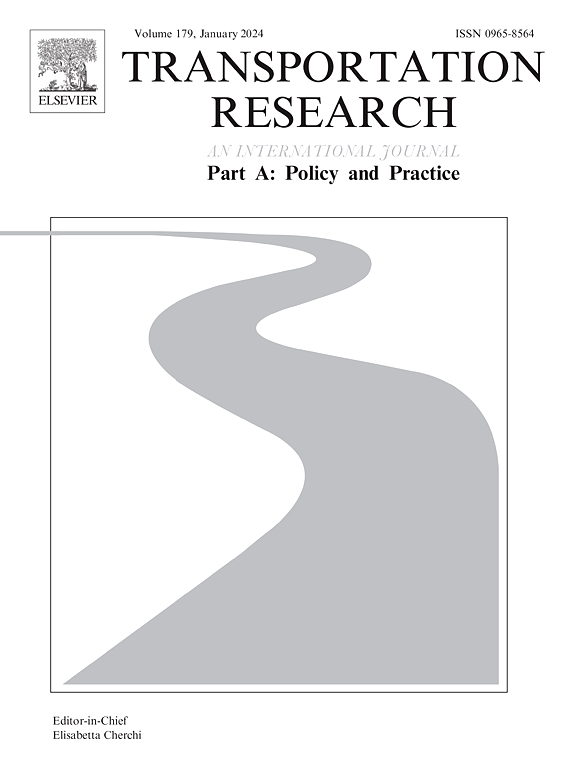Computer vision-enriched discrete choice models, with an application to residential location choice
IF 6.3
1区 工程技术
Q1 ECONOMICS
Transportation Research Part A-Policy and Practice
Pub Date : 2025-02-01
DOI:10.1016/j.tra.2024.104300
引用次数: 0
Abstract
Visual imagery is indispensable to many multi-attribute decision situations. Examples of such decision situations in travel behaviour research include residential location choices, vehicle choices, tourist destination choices, and various safety-related choices. However, current discrete choice models cannot handle image data algorithmically and thus cannot incorporate information embedded in images into their representations of choice behaviour. This gap between discrete choice models’ capabilities and the real-world behaviour it seeks to model leads to incomplete and, possibly, misleading outcomes. To solve this gap, this study proposes “Computer Vision-enriched Discrete Choice Models” (CV-DCMs). CV-DCMs can handle choice tasks involving numeric attributes and images by integrating computer vision and traditional discrete choice models. Moreover, because CV-DCMs are grounded in random utility maximisation principles, they maintain the solid behavioural foundation of traditional discrete choice models. We demonstrate the proposed CV-DCM by applying it to data obtained through a novel stated choice experiment involving residential location choices. In this experiment, respondents faced choice tasks with trade-offs between commute time, monthly housing cost and street-level conditions, presented using images. We find that CV-DCMs can offer novel insights into preferences regarding features presented in images, such as what street-level conditions people find most and least attractive and how these preferences vary across age groups.
求助全文
约1分钟内获得全文
求助全文
来源期刊
CiteScore
13.20
自引率
7.80%
发文量
257
审稿时长
9.8 months
期刊介绍:
Transportation Research: Part A contains papers of general interest in all passenger and freight transportation modes: policy analysis, formulation and evaluation; planning; interaction with the political, socioeconomic and physical environment; design, management and evaluation of transportation systems. Topics are approached from any discipline or perspective: economics, engineering, sociology, psychology, etc. Case studies, survey and expository papers are included, as are articles which contribute to unification of the field, or to an understanding of the comparative aspects of different systems. Papers which assess the scope for technological innovation within a social or political framework are also published. The journal is international, and places equal emphasis on the problems of industrialized and non-industrialized regions.
Part A''s aims and scope are complementary to Transportation Research Part B: Methodological, Part C: Emerging Technologies and Part D: Transport and Environment. Part E: Logistics and Transportation Review. Part F: Traffic Psychology and Behaviour. The complete set forms the most cohesive and comprehensive reference of current research in transportation science.

 求助内容:
求助内容: 应助结果提醒方式:
应助结果提醒方式:


